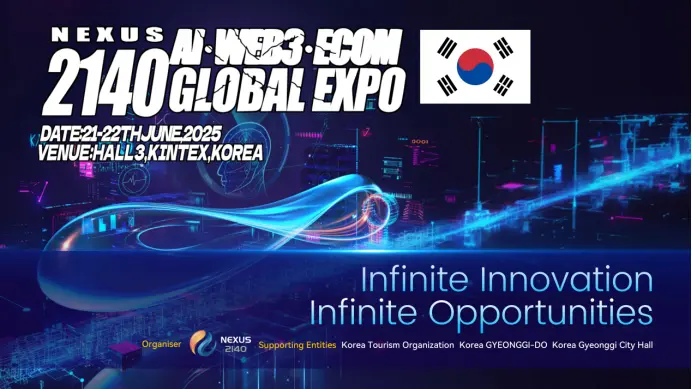Unlocking the Potential of the Cryptocurrency Market: From Utilization to Application to Practicality
Introduction
In today's financial markets, the cryptocurrency market, as an emerging asset class, has gradually attracted widespread attention and discussion. Although its total market capitalization still lags significantly behind traditional financial markets, the rapid development and high liquidity of the cryptocurrency market demonstrate its immense potential. With the continuous advancement of blockchain technology and its increasingly widespread application, the cryptocurrency market has attracted a large number of individual and institutional investors, becoming an indispensable part of the financial system.
This report aims to explore the development potential and future trends of the cryptocurrency market by comparing its market capitalization and trading volume with those of traditional financial markets. Special attention is given to the two emerging tracks of DePIN and RWA, which not only optimize resource utilization and enhance market efficiency but also provide new possibilities for the integration of traditional assets and blockchain technology. By analyzing successful cases in these tracks, we aim to understand the current state of the cryptocurrency market and its future development direction.
1. Comparison of the Cryptocurrency Market and Traditional Financial Markets
1.1 The Gap in Total Market Capitalization and Trading Volume
As shown in Figure 1.1, the market value comparison of the U.S. stock market, cryptocurrency market, and gold market is presented. The total market capitalization of the U.S. stock market (the total market capitalization of all publicly traded companies covered by the Wilshire 5000 index) exceeds $54 trillion, far ahead of the other two markets. In contrast, the market value of the cryptocurrency market is only $2.5 trillion, about 1/25 of the U.S. stock market. The market value of the gold market exceeds $15 trillion, roughly six times that of the cryptocurrency market, but still less than 1/3 of the U.S. stock market. This indicates that the market value of the U.S. stock market is significantly higher than that of the cryptocurrency and gold markets, which have relatively smaller market sizes. The comparison reveals that whether through attracting funds from traditional markets or fully leveraging its potential advantages, the cryptocurrency market has enormous growth potential in total market capitalization.

Source: MacroMicro, CompaniesMarketCap Figure 1.1
According to Chart 1.2, in 2023, the annual average trading volume of cryptocurrencies reached $36.6 trillion, far exceeding gold's $162.6 billion, the S&P 500's $252.9 billion, and the Dow Jones's $44.5 billion. This disparity in trading volume demonstrates the high liquidity and participation of the cryptocurrency market, attracting a large number of investors and speculators, reflecting strong interest and confidence in this emerging asset class. This high liquidity also enhances the market's risk resistance, allowing it to quickly adjust and maintain stability in the face of sudden events. This further indicates that the cryptocurrency market is becoming increasingly important globally, forming a significant component of the financial system.
|---------|-------------------| | | Annual Average Trading Volume (2023) | | Gold | 162.6B | | S&P 500 Index | 252.9B | | Dow Jones Index | 44.5B | | Cryptocurrency | 36.6T |
Source: World Gold Council, CoinGecko Figure 1.2
1.2 Potential of the Cryptocurrency Market
Large User Base
The cryptocurrency market is in a phase of rapid development, with the number of users continuously increasing and the market structure gradually maturing. More and more individual and institutional investors are joining the market, driving overall market prosperity. The cryptocurrency market holds an optimistic view on the significant growth of users in the crypto industry in 2024. Recently, on June 8, 2024, Binance announced that the number of registered users on its platform has surpassed 200 million.

Source: Binance Figure 1.3
According to estimates from Statista, as shown in Figure 1.3, under favorable market conditions, the number of users in the cryptocurrency market is expected to range between 850 million and 950 million in the future, highlighting the growing global interest in crypto assets. The continuous growth in user numbers brings significant market vitality to the cryptocurrency market. The participation of a large number of users enhances market liquidity, making asset trading more convenient and efficient.

Source: Statista Figure 1.3
Investment in Primary Market Projects
The entry threshold for the cryptocurrency market is relatively low, providing ordinary investors with more opportunities to participate in primary market project investments. This means that investors can not only trade in the secondary market but also get involved at the early stages of projects to achieve higher returns. Moreover, the cryptocurrency market is characterized by high innovation. The development and application of blockchain technology continuously give rise to new projects and investment opportunities, and these emerging technologies and business models often achieve rapid growth in a short period. This environment presents unprecedented opportunities for investors.
Active user communities also provide strong support for the promotion and development of new projects, where users are not only participants in the market but also early investors and promoters of new projects. This user-driven market dynamic promotes the widespread application of cryptocurrency technology and the healthy development of the ecosystem, while attracting more investors and developers into the market, forming a virtuous cycle that further enhances the market's innovation capability and competitiveness.
2. Leveraging User Base Advantages to Unlock Potential
2.1 DePIN Track: Expanding Users While Strengthening Resource Utilization
Application: Concept and Operation Model of DePIN Track
DePIN (Decentralized Physical Infrastructure Networks) refers to the use of blockchain technology and token incentive mechanisms to decentralize infrastructure originally provided by centralized companies, such as storage space, network traffic, cloud computing power, energy, etc., to be jointly built and maintained by users worldwide. Usage: Case Study - io.net
In recent months, the DePIN project Ionet has attracted widespread attention due to its unique community participation and reward mechanism. Let's take a closer look at the entire operational logic of io.net. As shown in Figure 2.1, io.net collects the remaining GPU computing power from gamers or mining institutions and packages it for sale to startup AI companies or developers. Due to limitations in funding and team technology, these startups and developers do not compete with industry-leading AI companies for large model training but focus on AI model inference and result stages that require relatively lower computing power. Therefore, these startups and developers are more inclined to choose cost-effective computing power integrators like io.net rather than renting GPU computing power from large companies.
The success of io.net demonstrates that DePIN essentially acts as an intermediary, addressing the specific demands of B-end entities for computing power, networks, etc., while also meeting the excess economic benefits sought by C-end users within their hardware capabilities. DePIN provides services to organizations that need these resources, such as AI companies and gaming companies, by integrating the remaining computing power, network, and storage space from different users' phones or computers. DePIN is particularly suitable for providing computing power support for AI, which is the first application scenario that comes to mind when people mention DePIN.
io.net not only attracts a large number of users but also successfully provides cost-effective computing power solutions for startup AI companies and developers. This successful model showcases the immense potential of DePIN in optimizing resource utilization, reducing costs, and enhancing efficiency.

Source: io.net Figure 2.1
Practical: Future Outlook
The success of io.net illustrates how the DePIN model can achieve the construction of decentralized infrastructure by converting users' idle resources into economic benefits. This resource redistribution model brings direct economic benefits to users, enhancing the utilization of their surplus resources; on the other hand, it addresses the urgent demand for moderate computing power from numerous AI companies and developers. Therefore, DePIN not only benefits both project parties and users but also has strong social benefits. The DePIN model enhances resource utilization, reduces resource waste, and lowers costs for small and medium-sized enterprises and developers, allowing them to focus more on innovation and product development. This model injects new momentum into economic development and contributes to resource conservation. Thus, DePIN is not only an innovation in business models but also a reflection of social progress, with widespread and far-reaching impacts.
2.2 RWA Track: Attracting Traditional Traders
Application: Definition and Role of RWA Track
RWA (Real World Assets) refers to assets with actual value that are tokenized through blockchain technology. Owning a token represents ownership of that asset in the real world, allowing for transactions such as lending, renting, and buying/selling on-chain. The underlying assets that support its value are typically real estate, stocks, bonds, etc.
Through the RWA track, traditional Web2 traders can more easily enter the Web3 world. For example, by tokenizing real estate, investors can buy, sell, and manage real estate assets on the blockchain, enjoying higher trading efficiency and lower costs. Similarly, by tokenizing stocks and bonds, investors can trade on decentralized exchanges, achieving 24/7 uninterrupted trading and enhancing investment flexibility. Usage: Case Study - Propbase
Propbase is a cutting-edge real estate tokenization platform that leverages the power of the Aptos blockchain to provide users with a new and exciting way to invest in real estate. The $PROPS native utility token powers the entire ecosystem and provides a unified method for all smart contract interactions, property transaction fees, and access to new listings on the Propbase DApp. PROPS tokens can be used on the platform to purchase virtual goods, services, and content to meet user needs. As the platform ecosystem continues to accumulate and develop, the application scenarios for PROPS tokens will become more extensive, further enhancing their value.
Propbase facilitates the tokenization of real estate assets, enabling owners to convert physical properties into digital tokens that can be easily traded, transferred, and managed on the blockchain. By breaking down the traditional barriers to real estate investment, Propbase democratizes real estate investment and expands opportunities for investment diversification.

Source: io.net Figure 2.1
Practical: Future Outlook
The tokenization of physical assets such as real estate is just the tip of the iceberg for the RWA (Real World Assets) track, with U.S. Treasury bond tokenization and the credit lending market dominating this track. According to a report by the Boston Consulting Group (BCG), it is estimated that by 2030, the tokenization scale of RWA could reach an astonishing $16 trillion, equivalent to 10% of global GDP. This includes the tokenization of on-chain assets and the securitization of traditional assets (such as ETFs and real estate investment trusts). In this context, attracting traditional traders to enter the RWA market becomes crucial. Traditional traders are accustomed to highly stable and clearly regulated environments, while the tokenization of RWA offers new investment opportunities, along with higher transparency and efficiency. Through smart contracts and blockchain technology, RWA tokenization can significantly reduce transaction costs and improve asset liquidity, which is a huge attraction for traditional traders. Furthermore, the expansion of the RWA market can also drive the development of the entire cryptocurrency market by attracting more traditional financial capital into this emerging field, promoting the maturity and robust development of the crypto industry.
To learn more about the RWA track and related project recommendations, you can refer to the previously published article "Unveiling the Wealth Code of the RWA Track: Prospective Analysis and Quality Project Recommendations," which provides a comprehensive analysis of the RWA track.
4. Conclusion and Future Outlook
Conclusion
From the above analysis, it can be seen that although the cryptocurrency market currently has a significant gap in total market capitalization compared to traditional financial markets, its high liquidity and user participation demonstrate immense potential. As the user base of the cryptocurrency market continues to expand, more individual and institutional investors are participating, driving rapid market development. Meanwhile, the emergence of tracks like DePIN and RWA further enhances the market's innovation capability and attractiveness. These emerging tracks not only bring new investment opportunities to the market but also promote the maturity and development of the cryptocurrency market by optimizing resource utilization, reducing costs, and enhancing efficiency.
Future Outlook
Looking ahead, the development potential of the cryptocurrency market is enormous. First, the continuous growth in the number of users will inject more vitality and funds into the market, driving further expansion of market size. Second, the success of the DePIN track indicates that by integrating users' idle resources, resource utilization and economic benefits can be effectively enhanced, bringing new development momentum to the market. In the future, we can expect more projects similar to Ionet to emerge, further promoting the development of decentralized infrastructure networks. At the same time, the emergence of the RWA track provides new possibilities for the integration of traditional assets and blockchain technology. By tokenizing real-world assets, the cryptocurrency market can not only attract more traditional investors but also achieve efficient management and trading of assets, enhancing market liquidity and transparency.
Overall, the cryptocurrency market is in a phase of rapid development, and with continuous technological advancements and application expansions, there will be more investment opportunities and development space in the future. Market participants need to maintain keen insights, seize market changes and opportunities, and achieve greater returns in this vibrant and potential-filled market.










